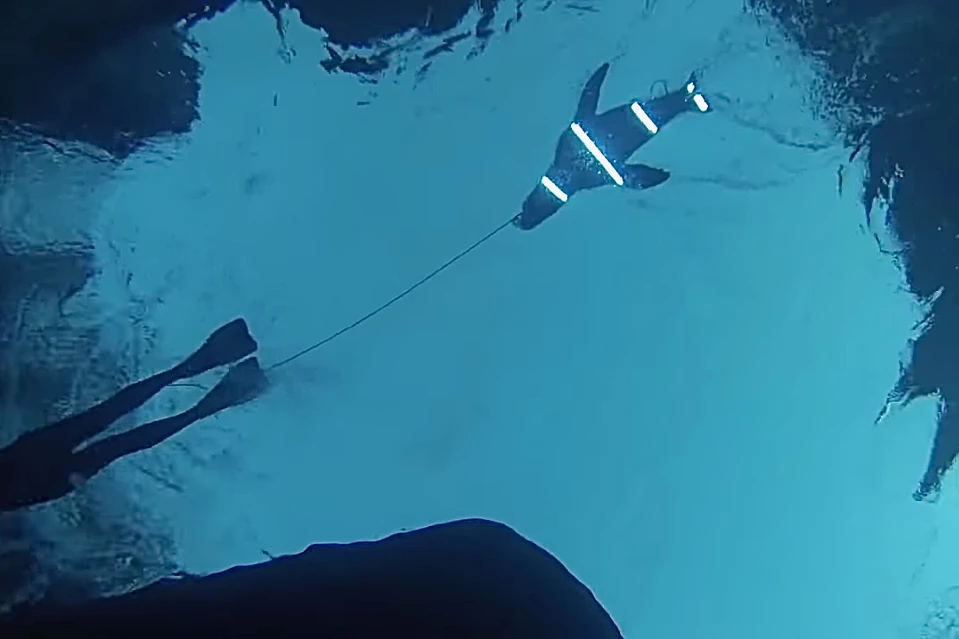If you're a surfer who doesn't want to be attacked by great white sharks, your surfboard should be as dark and stealthy as possible … right? Perhaps not, as a new Australian study suggests that a lit-up board may actually be better at keeping the sharks away.
For some time now, it has been believed that great whites attack surfers because when viewed from below, the silhouette of a surfer on a board looks much like the silhouette of one of the shark's primary animals of prey – a seal.
It therefore goes to reason that if you could visually break up that surfer's silhouette, it wouldn't look nearly as seal-like. To that end, some scientists have experimented with surfboards that have black-and-white stripes on their underside. The problem is, when viewed against a backdrop of a bright sunny sky, those boards still present a relatively solid dark silhouette.
One animal that gets around this problem is the plainfin midshipman fish. It evades predators via luminous glandular organs on its underside known as photophores, which break up its silhouette even viewed against a bright background.

Inspired by that fish, a team led by Macquarie University's Dr. Laura Ryan and Prof. Nathan Hart set out to see if LEDs could do the same thing for surfers.
In multiple trials performed over a period of six years at South Africa's Mossel Bay, Ryan and colleagues towed seal-silhouette-shaped foam decoys across the surface of the water, 20 meters (66 ft) behind a boat. When those decoys were left in their basic form, they were regularly attacked from below by great whites, which are common in the area.
However, when the undersides of the decoys were completely covered in LEDs, the attacks dropped off drastically. South African authorities wouldn't let the team experiment with actual surfboards, in case doing so encouraged the local sharks to go after surfboards in general.
Of course, covering the entire underside of a surfboard with LEDs would be too costly and impractical for real-world usage.
With that limiting factor in mind, the scientists experimented with various patterns of the lights. It was ultimately found that spaced stripes of LEDs, running width-wise across the underside of the decoy, proved to be most effective at stopping attacks.

Ryan and Hart now plan on testing a prototype board with embedded LED stripes. Among other things, they wish to see how effective the lights are when the board isn't moving, and how effective they are at preventing attacks by shark species other than great whites.
"It’s like an invisibility cloak but with the exception that we are splitting the object, the visual silhouette, into smaller bits," says Prof. Hart. "It’s a complex interaction with the shark’s behavior."
A paper on the research was recently published in the journal Current Biology. You can see the sharks attacking the seal decoys in the video below.
Source: Macquarie University




